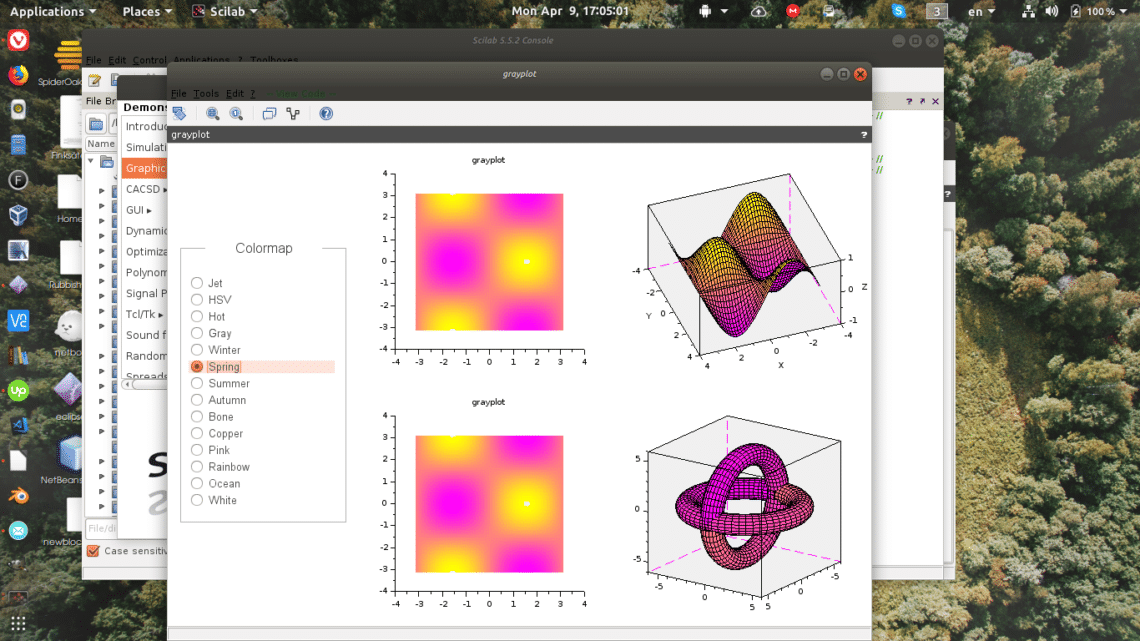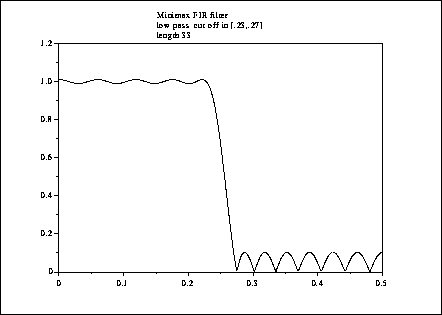

- #Scilab filter design how to
- #Scilab filter design install
- #Scilab filter design software
- #Scilab filter design code
Fifth parameter is error vector whic is used only in chebisev and elliptic technique Fourth parameter is cut of frequency in normalization form It is also availabe other methods such as cheb1, chep2 dan ellip. Third parameter is technique which is used to design. Second parameter is filter type which lp= lowpass, hp=highpass, bp=bandpass. We could use higher order filter but please remberber taht higher order filter increase the number of calculation iterations. The normalization of 5Hz is 0.005 and 50 Hz is 0.05. In this case we select the frequency beetween signal and noise. Using Scilab, we can use available technique to design the filter such as Butterworth, Chebisev and elliptic.ĭeciding the cut of frequency is very easy by looking at freuency of signal and noise.
#Scilab filter design how to
The important note is how to decide the cutt off frequency of the system. To seperate the signal from noise, we could use low pass filter. The noise is sinusoidal signal 50 Hz which also has 4 seconds time. Original signal is sinusoidal signal 5 Hz for 4 seconds. The following will be simulated noise cancellation using generated signal. Band Rejection: reject signal starting from cut off frequency 1 to cut of frequency 2.įilter coud be used to get the desired signal for example when EKG signal is disturbed by noise wich has lower frequensi signal. High Pass Filter (HPF): admit the signal over the cut of frequency Band Pass FIlter (BPF): pass signal from cut off frequency fc1 to cut of frequency fc2 Low Pass Filter (LPF): allow signal which as lower frequency than the cut off frequency. As we know that base on frequency respon filter could be classified into: In this article i would like to explain how to design filter using signal processing tool in Scilab. AS open source software, we could participate to develop the library of this software.
#Scilab filter design software
The software could be download freely from scilab website. The cic_process function).Scilab is an open source software for numerical computation.
#Scilab filter design code
(the complete source code of this example is available in the documentation of In this example, we simulate the decimation of a signal from the original sampling rate of 10 MHz to a sampling rate of 625 KHz The CIC mini-toolbox enables both CIC decimation and interpolation simulation. The global filter (CIC and compensation FIR) has the desired response. Show a periodical frequency response (aliasing every 400 Hz), which is normal. Working at 400 Hz, that is, after the decimation by 16 (CIC decimation ratio), With the mini-toolbox, this can be done with the following command: R=16, N=5, M=1, Fin=6400, R2=2, Fcut=80, ntaps=60 Ĭfir = cic_comp_design(R,N,M,Fin,R2,Fcut,ntaps) įIR compensation filter (impulse response) Global filter (CIC and compensation FIR)Īs you can see on the above figure, the compensation filter (red curve),
#Scilab filter design install

(reduction of the sampling rate: oversampled acquisition systems, To change the sampling frequency in a big ratio, for instance for decimation CIC filters are very useful in applications where one needs


 0 kommentar(er)
0 kommentar(er)
